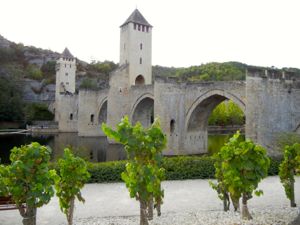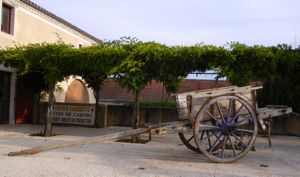 |
What to See & Do in Cahors, France | |
| Known for its wine and symbolized by its bridge, Cahors is the capital of the Lot Department. | ||
|
|
|
Cahors has a long history, dating from the Gallo-Roman times, of which some vestiges still remain. Known as Divona Cadurcorum, in honor of a sacred spring, the city had a theater, public baths, temples, mosaics, and more. Its wealth even then was related to wine, as well as to its crossroads location. Today its inhabitants are still sometimes referred to as Cadurcians. Pont ValentréDuring medieval times, particularly in the 12th to the 14th centuries, Cahors was a thriving city. In the 1300s several bridges were built, of which the Pont Valentré survives today and is the symbol of the city. Cahors's location in a bend of the River Lot made bridges of great importance. More... Cahors WineEvidence of the importance of wine is found throughout Cahors, including the Maison du Vin de Cahors, located near the Pont Valentré. Most of the Cahors vineyards stretch west from the city, and many offer visits and tastings. The Tourist Information Office can provide more information. Some of the old city walls still survive and can be seen around the town. In addition, a number of private homes and public buildings from the 15th and 16th centuries can be visited on a walking tour of the old city. The Cathédrale St-Étienne, begun in the 12th century and built and rebuilt over centuries, retains some of its fortress-like architecture. Modern CahorsModern Cahors is centered on the Boulevard Gambetta, named for favorite son Léon Gambetta (1838 - 1882), a founder of the Third Republic. Shops, cafés, restaurants, and fountains line this busy street, which is also home of the Hôtel de Ville, or town hall. In season, Cahors offers a Petit Train, which provides a tour of the city, as well as excursions in horse-drawn carriages. Nearby TownsCahors is well-located for visiting other spots in the Dordogne and the Midi-Pyrénées regions of France. Just 71 kilometers (44 miles) southeast of Sarlat-la-Canéda, the capital of the Dordogne, Cahors is easily accessible to Sarlat and other sites such as Beynac-et-Cazenac, Domme, or La Roque-Gageac. To the east is the lovely cliffside town of St-Cirq-Lapopie, while the city of Toulouse is just 113 kilometers (70 miles) to the south.
|
|
Above, Le Pont Valentré, with Cahors grapevines in the foreground.
|



